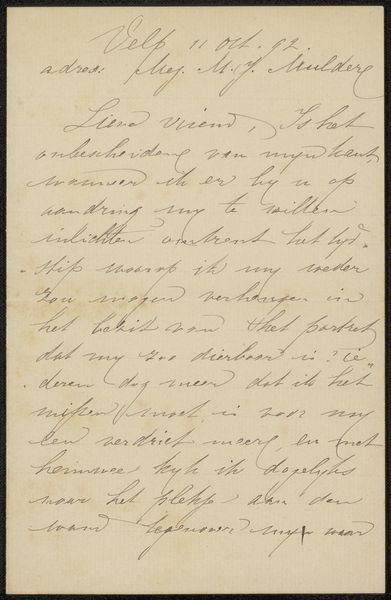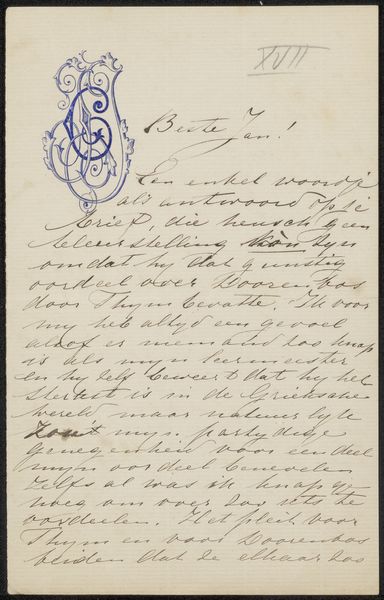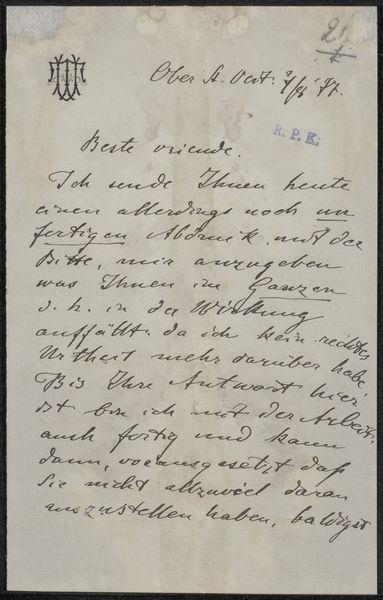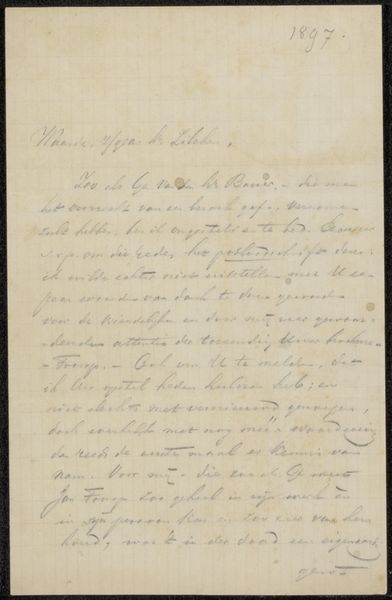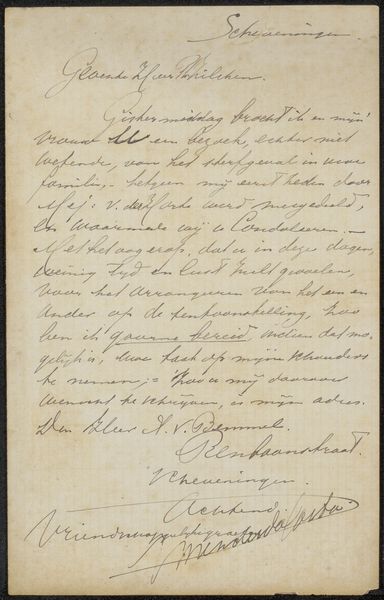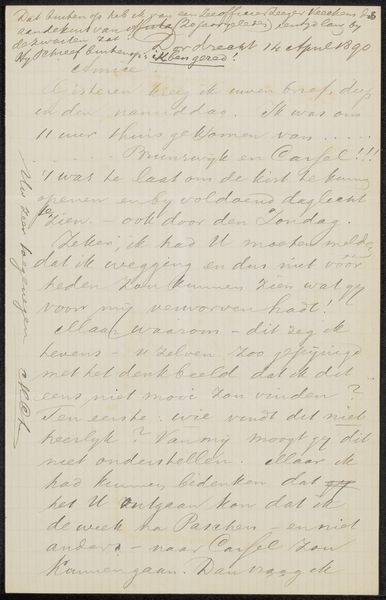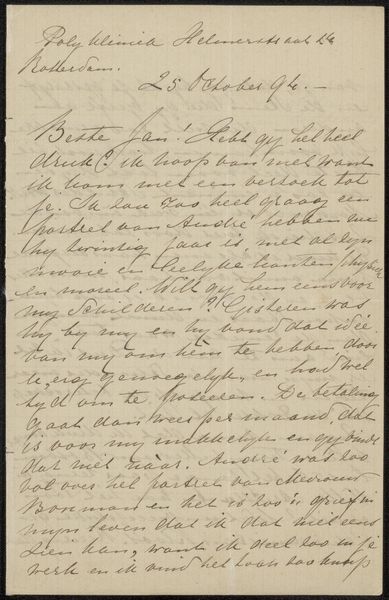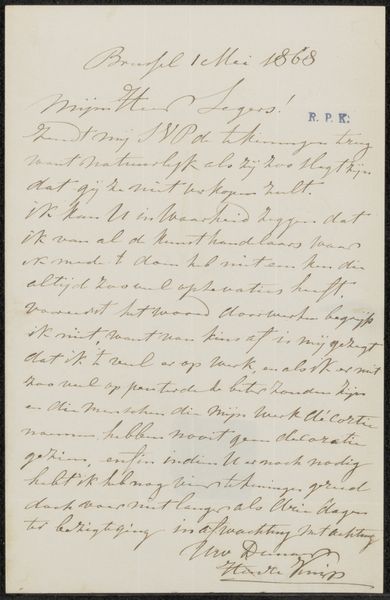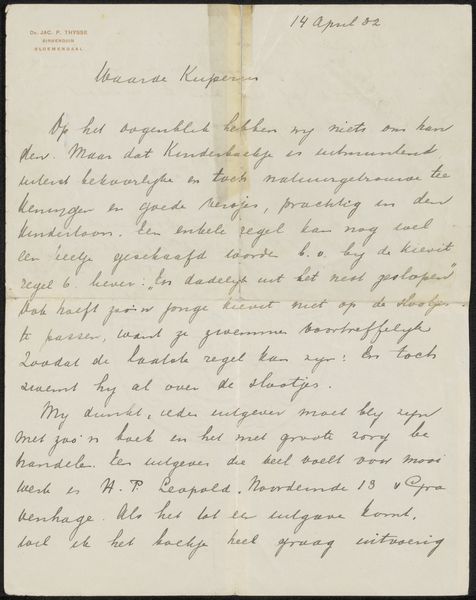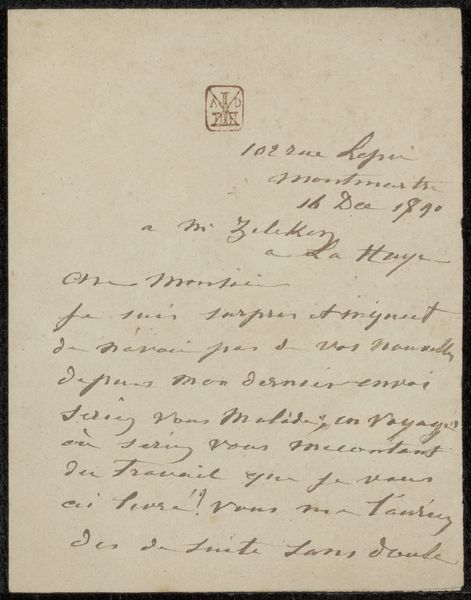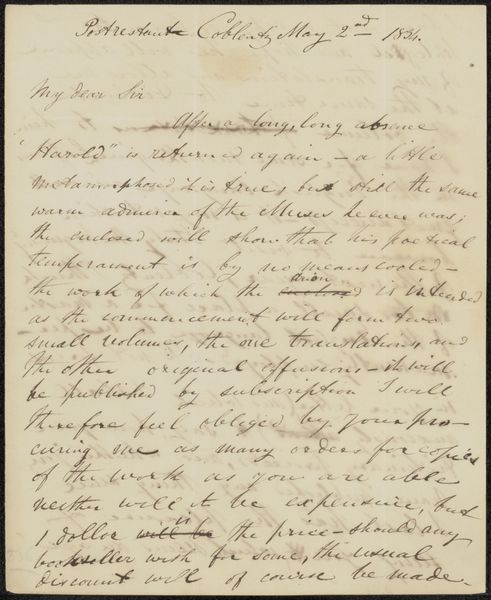
drawing, paper, ink
#
drawing
#
paper
#
ink
Copyright: Rijks Museum: Open Domain
Curator: Willem Bastiaan Tholen penned this "Brief aan Frans Buffa en Zonen," potentially in 1889. It’s an ink drawing on paper, now residing here at the Rijksmuseum. Editor: Looking at this, I’m immediately struck by its intimacy. It feels so personal, like stumbling upon someone’s private thoughts. Curator: Exactly. Letters were powerful tools in the art world. This missive offers us a glimpse into the late 19th-century art market through Tholen's professional and personal interactions. The recipient, Frans Buffa en Zonen, would have been a notable art dealership. Editor: I imagine letters like these were essential in the social construction of artistic value. These dealerships, these communications, effectively certified or legitimized an artist's work for collectors and patrons, reinforcing pre-existing hierarchies within the art market. Curator: Precisely. The materiality of the letter adds another layer, too. Tholen uses ink on paper, common for the time, and his penmanship reveals something about his character and status. Consider who had access to literacy, time, and materials. Editor: It also highlights the power dynamics between the artist and the dealer. The tone in these letters could suggest dependence, but perhaps also a subtle negotiation for control over the artist's representation and, of course, pricing. It's not just about the artistic merit; it is about capitalism and visibility. Curator: These communications were crucial in constructing and reinforcing artistic careers. Analysing it this way means that we are acknowledging Tholen as part of a wider cultural matrix. His social positioning directly affects his visibility, the art market, and more. Editor: So by considering this artifact within its broader context, we see that the artistic 'genius' doesn't operate in a vacuum. Tholen's success was contingent on these social interactions. Curator: And it illustrates how art history can benefit from including broader political and economic conditions in our readings of art, including considering themes related to gender and power structures in the nineteenth-century. Editor: Absolutely. This is more than just a letter. It's a document of art world economics and human relations. Curator: Thank you, your comments bring nuance to understanding of 19th-century Dutch Art!
Comments
No comments
Be the first to comment and join the conversation on the ultimate creative platform.
